

This was a trip planned for the summer of 2020, with Amma, Appa, my daughter and I to have gone North of the North, to visit the great Kedarnath temple with its stunning backdrop of the Garhwal Himalayas. But then came COVID, and Amma left us in December 2020 succumbing to cancer, and after doing 3 more trips together, Appa joined her this year in early 2023. My daughter and I felt his loss terribly and could not really get around to feeling normal again. The best antidote, I thought, was to go ahead with the road trip, bookings for which were already in place. So, on April 22, 2023, my daughter and I, along with our reliable driver, set out on this unforgettable journey of 4500kms to the ‘Abode of the Gods’.
Road Trip Gangotri Kedarnath Detailed Schedule
Registrations for the Chard Dhams in Uttarakhand are a must and the state government provides a convenient online process at https://registrationandtouristcare.uk.gov.in/. Ensure your photograph and aadhar card images are ready for upload to the site along with travel details. I registered ourselves and our driver as a single group traveling in a private car. The registration and GMVN (Garhwal Mandal Vikas Nigam) hotel booking portals for the summer open up usually after the opening date for Badrinath is announced (on Basant Panchami day, usually in February). Then there is a mad rush by individuals and tour operators to register on dates of their choice, as there is an upper limit for the number of pilgrims allowed to each dham in a day. The opening date of the Kedarnath temple is announced on Akshaya Tritiya day and usually Yamnotri, Gangotri and Kedarnath temples open 2-3 days prior Badrinath, so all dhams can be visited in order conveniently by pilgrims.
At about the the time we travelled (April-May 2023), there were multiple check points set up by the local police and administration to ensure only those who had prior registrations and valid hotel bookings were allowed to enter the vicinity of the dhams, especially Kedarnath, because of the inclement weather and danger of land slides and avalanche.
We left at 4:30am on a cool Saturday morning on 22nd April. We sped out of the city to join the NH48, having to cover 500kms to Godhra in Gujarat, our first night halt. There was minimal obstruction by way of traffic and the roads were in good condition. We halted for an early chai at Palghar, breakfast at a food mall on the highway in Valsad and a light lunch at Anand. Godhra was a small municipality in the Panchmahal district of Gujarat. We were booked in the only multi-storey hotel there, as it was close to the national highway. We reached well before evening and after a hot bath, rested before the long journey to Jaipur the next morning.
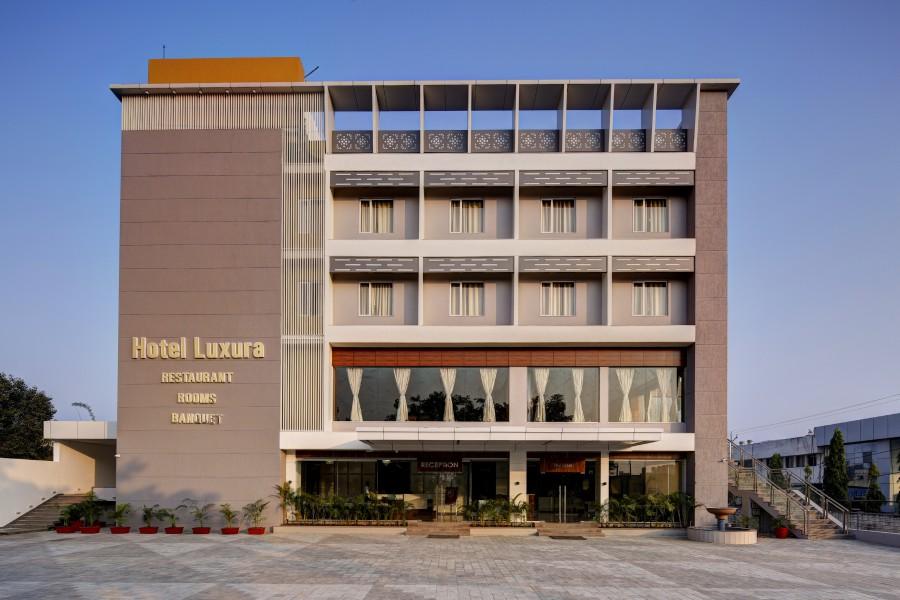
Hathi Mauja Resort was a lovely hotel next to Hathi Gaon (Elephant village) in the forest outskirts of Jaipur, close to the national Jaipur-Delhi highway and the Amer Fort. The village housed over 100 elephants and children and adults were encouraged to spend time with them. We reached the resort in the evening, having travelled 650kms and through the city of Jaipur to get there, so unfortunately couldn’t spend time in the village. The resort however, was a delight. Our room was tastefully furnished with natural elements – the high ceiling with wooden beams, beautiful wooden borders for mirrors, cupboards and escritoire in lovely dark wood and a high, wooden cot. The room was equipped with modern conveniences too. A must-visit place!
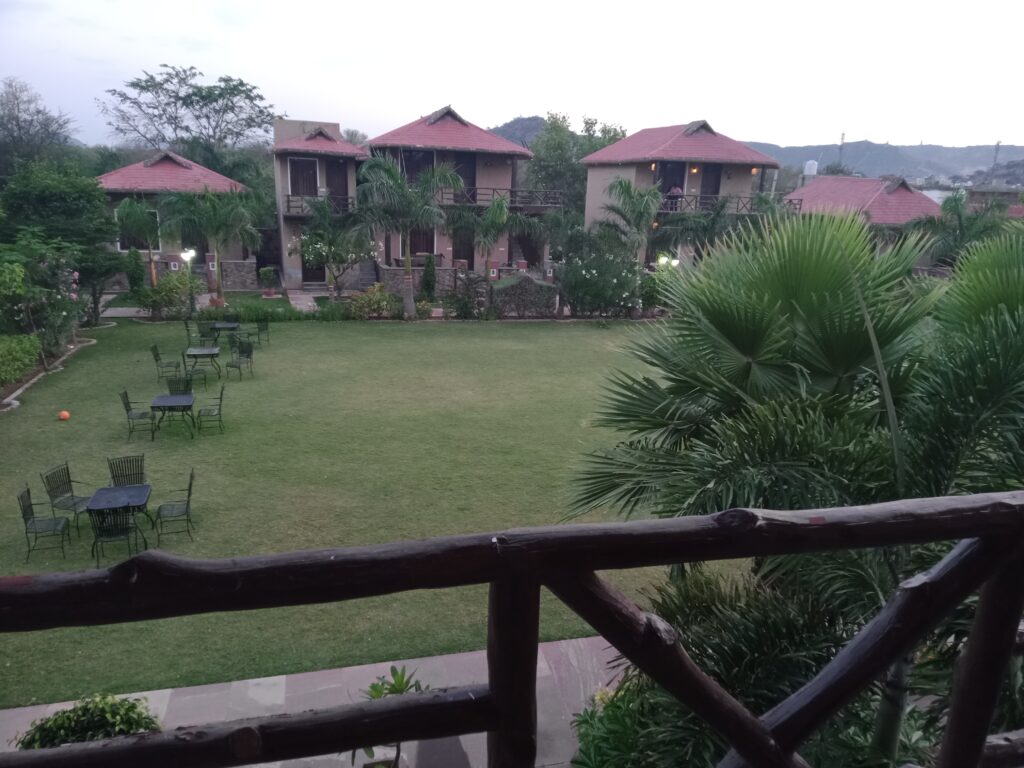
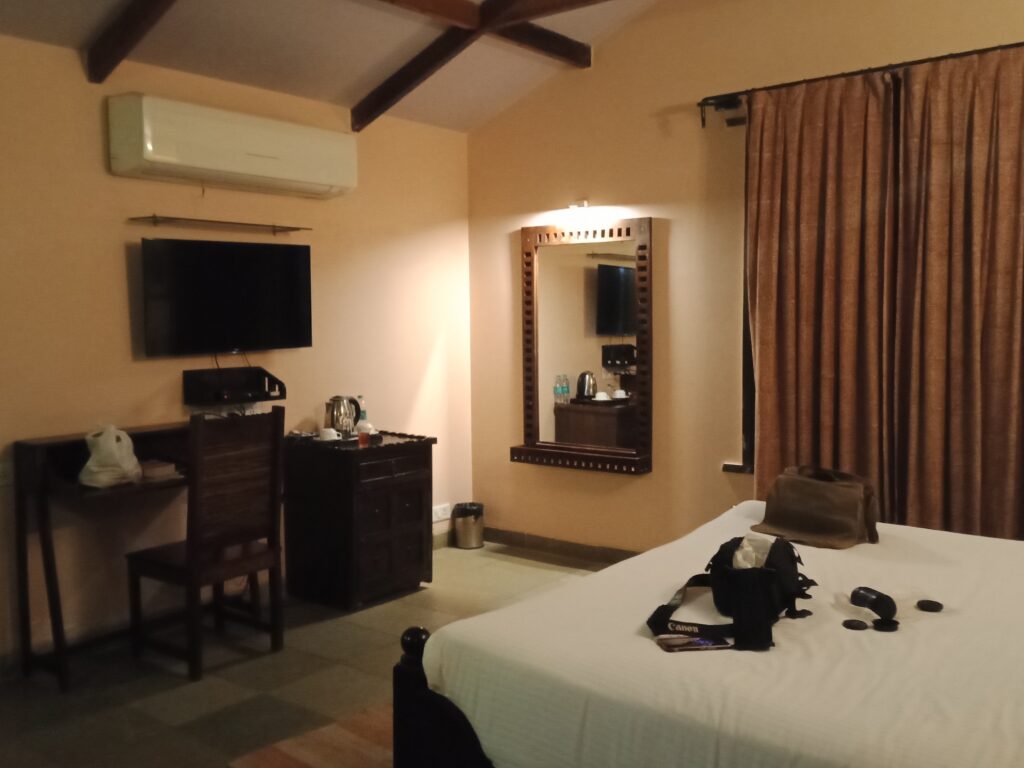
After a lovely breakfast the following morning, we joined the short distance to the Jaipur-Delhi highway and raced to reach Haridwar, around 490kms, by evening. The roads had been good throughout, and the expressway to Delhi especially so. We wanted to avoid entering the capital, so stopped for directions to ensure we took the new expressway to Meerut via Gaziabad. We finally reached Haridwar after passing Rourkee at around 5pm.
The Ganga-facing room on the ground floor of the venerable Hotel Alaknanda in Haridwar felt like home. We had been here with Amma and Appa 3 years ago and would visit again on our way back from Kedarnath. We rested that evening after dinner. The next morning my daughter and I walked the 2.5km distance to Har-ki-Pauri with the Ganges flowing powerfully beside us. We roamed the narrow streets, shopped for colourful bangles and rings, had puri-bhaji and lassi at the famous “Mohanji Puriwale” restaurant and finally walked back in the warm sunshine to our hotel. We left our shopping in our room and spent a wonderful hour bathing in the waters of the great and gracious river (holding on tight to the support bars every few metres). It was a lovely experience. We again walked 5kms to Har-ki-Pauri and back in the evening, to watch the Ganga aarti and release tiny flotillas of flowers and lamps into the mighty river.
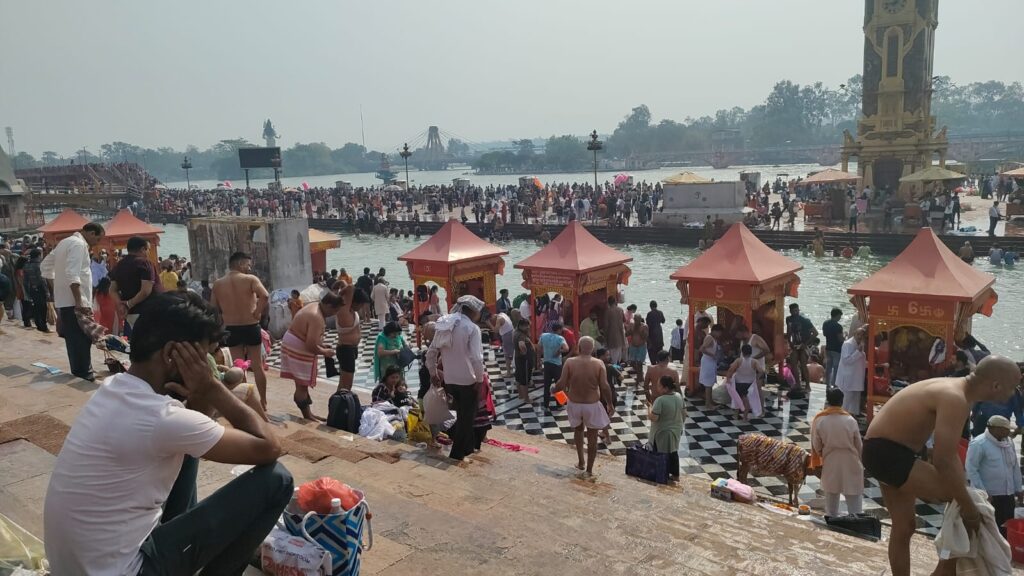
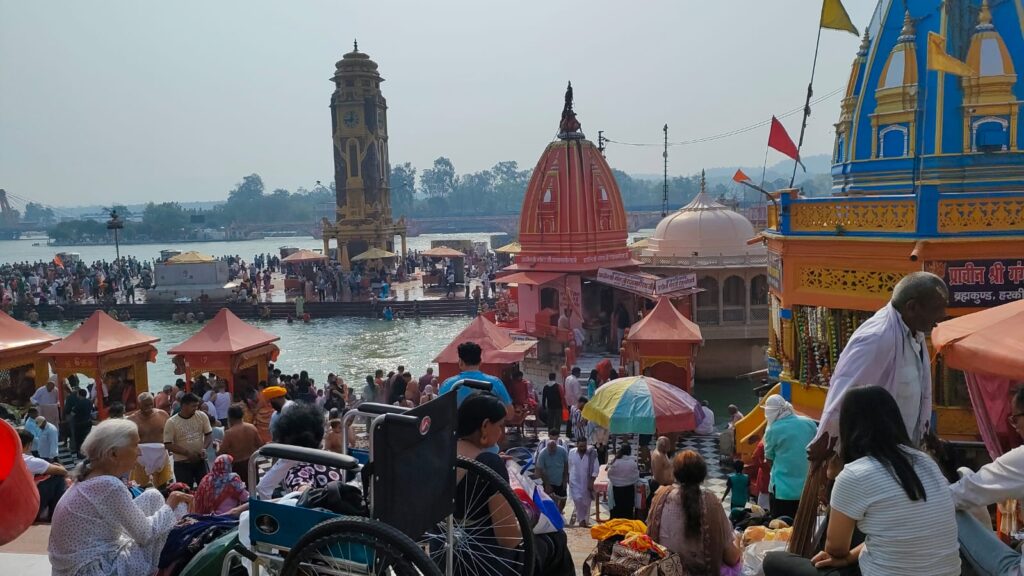
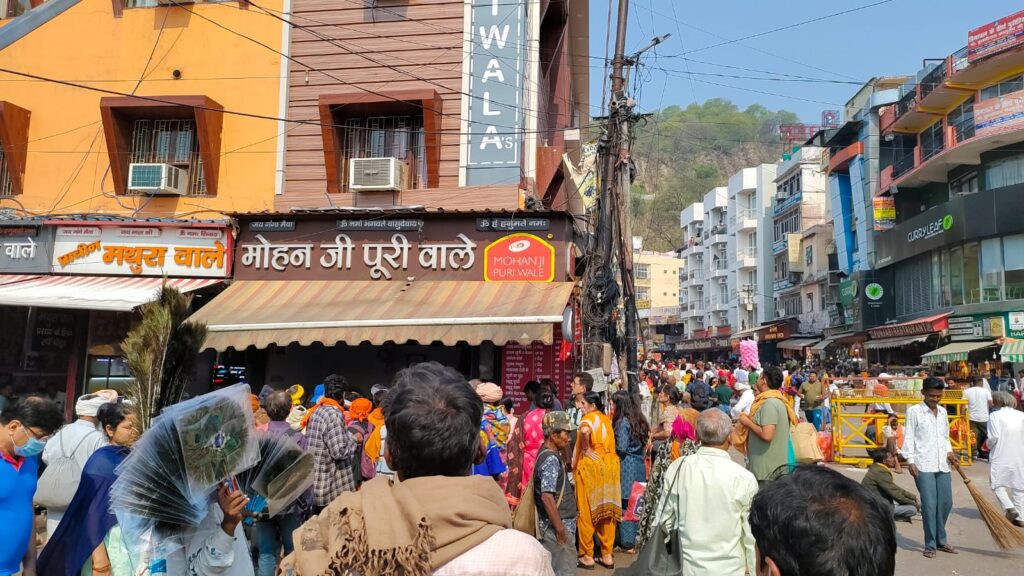
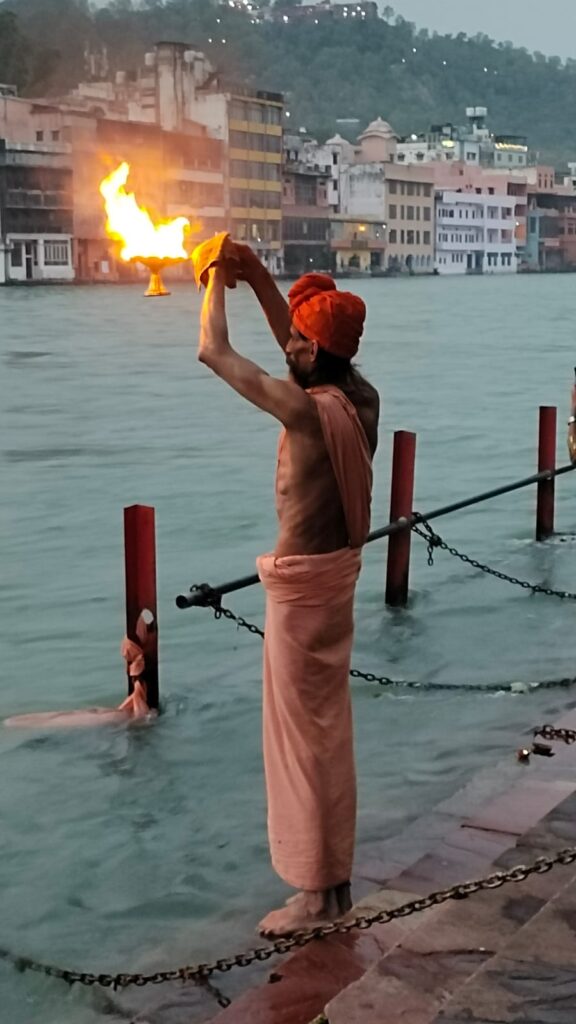
Day 5 of our trip and we left for Gangotri after breakfast at Haridwar. The route to Gangotri took us through the districts of Haridwar, Dehra Dun, Pauri Garhwal, Tehri Garhwal and finally Uttarkashi. And as we climbed, the weather kept getting cooler until finally, when we reached Gangotri at an elevation of 3,415 mtrs (11,204 ft), it was freezing at -3 degree Celsius. It was 9pm and dark and we had driven a mere 291 kms in over 12 hours. Driving in the plains was swift. But the narrow road on NH108 which supported traffic both ways in the mountainous regions was cut into cliffs without supporting guardrails and had to be navigated with care. In such a narrow road, traffic including buses, jeeps, vans, mini buses, cars and bikes moved in both directions. At many places, as the road curved around the mountains, the turns would be so sharp and narrow that only one vehicle could pass at a time. This caused long traffic jams, and we crawled on at 20 kms/hr. While the road conditions were excellent, there had been landslides at some points that had narrowed the motorable way even further. The BRO (Border Roads Organisation) was continuously patrolling the roads for landslides.
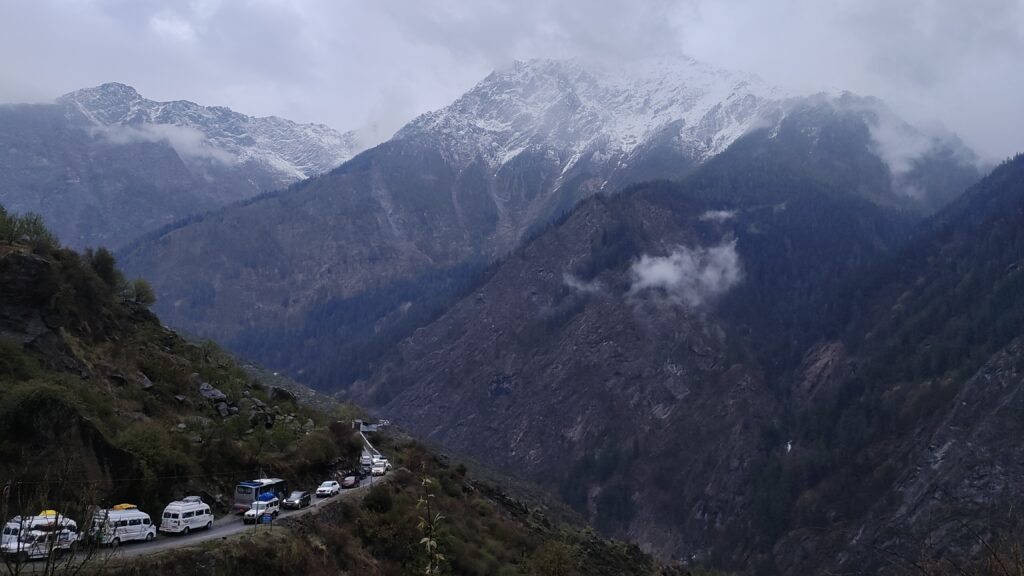
The drive to Gangotri required excellent driving skills and our Tirunelveli driver was up to the challenge. The views enroute were stunning: the beautiful Bhagirathi flowing below and the awe inspiring, snow-capped peaks of the Grahwal Himalayas looming far and above.
We checked into our hotel (GMVN Gangotri TRH) in the dark. This included hiring porters to carry our luggage from the car park area, climbing down narrow, steep steps, crossing a bridge and climbing up to the hotel entrance. We were cold and hungry, not having eaten since breakfast. Electricity was not available all the time and our room was not equipped with a heater. After a meal of dal and rice, we crashed into bed with all our woolens on.
The next morning was better. We could see. After a hot cup of tea and a hot bath, my daughter and I left for a long walk towards the Gangotri temple. We had breakfast on the way and bought new pre-paid Jio SIM Cards for our phones and that of the driver. Other SIM cards did not seem to work there. We walked close to a kilometre uphill and came upon the beautiful temple with the Bhagirathi flowing below. Gaumukh, from where the Gangotri glacier melts and flows down as Bhagirathi was 19km walking-distance from Gangotri. It is believed that King Bhagirath prayed to Goddess Ganga to absolve the sins of his ancestors. Ganga took the form of a river and touched the earth at this spot as Bhagirathi (daughter of Bhagirath). She leapt down with such force that she would have flooded the earth. Lord Shiva tied her in his locks and released the mighty river as a trickle. So goes the story as told to children over the ages. We stood in queue and waited our turn for a darshan of the goddess, the holiest river in India. The rocks over which the Bhagrathi flowed looked like scooped out butter, creamy and soft, through hundreds of years of erosion by the elements. Gorgeous!
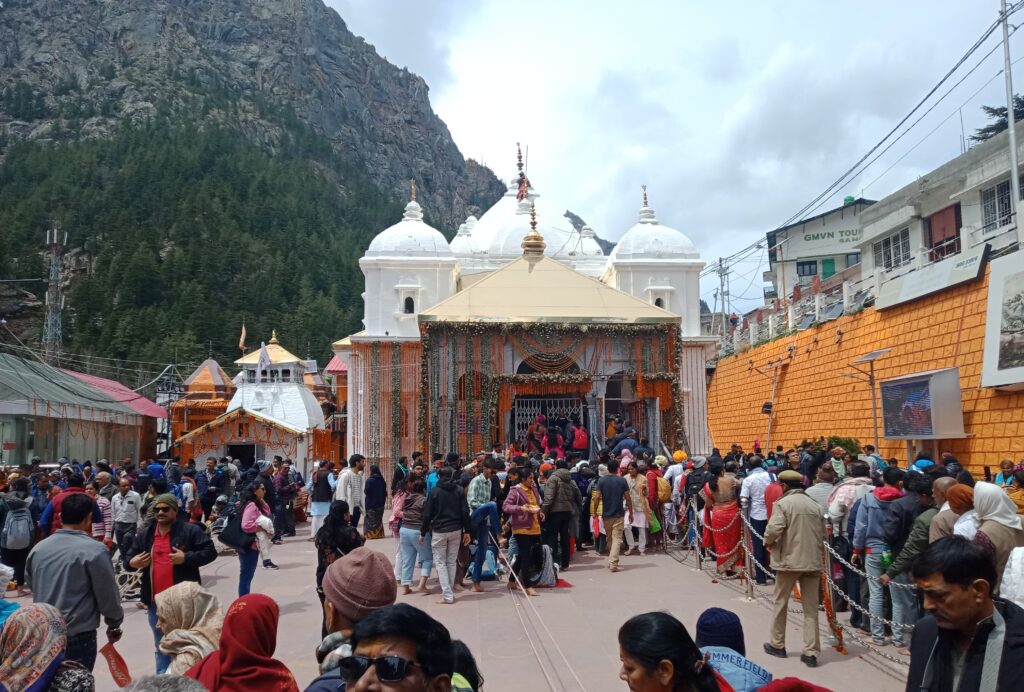
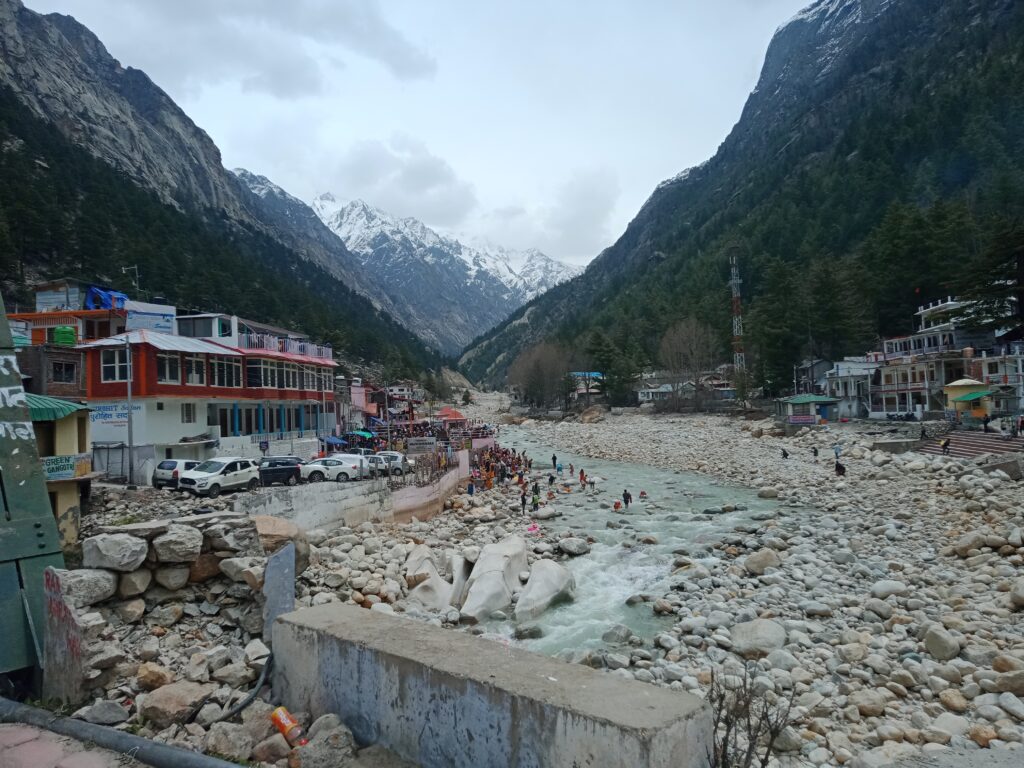
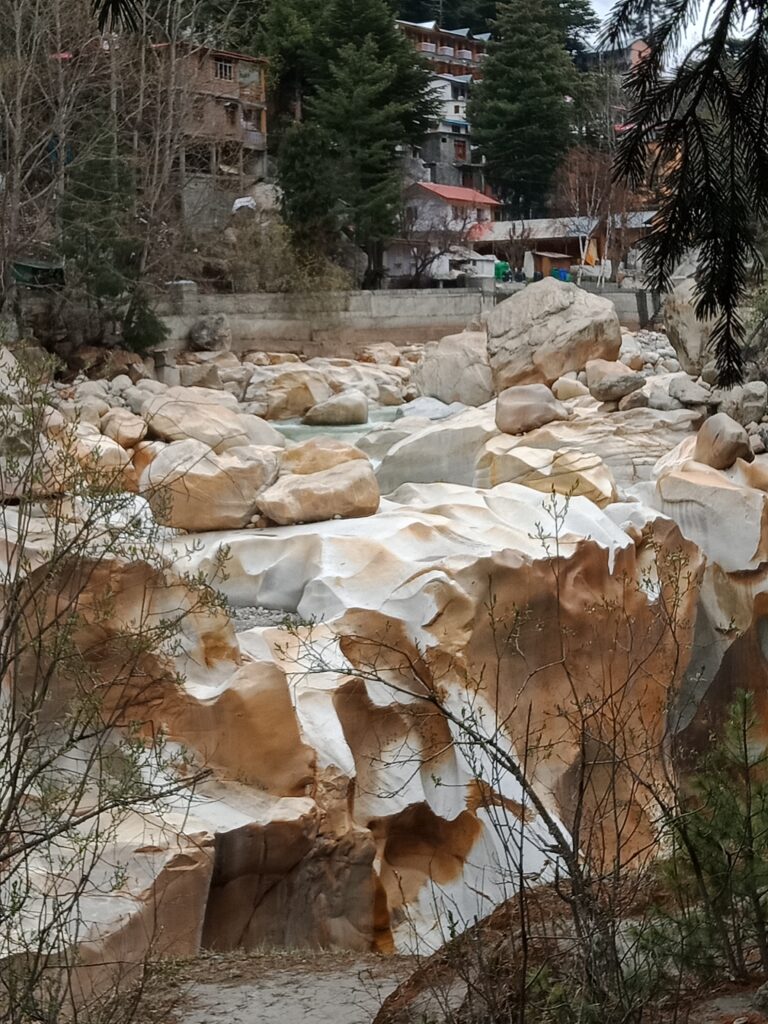
Gangotri was a small town with very few grocery shops. Since all the dhams were shut six months in a year during winter, the only source of income was during the pilgrim season. We scoured the shops for a few bananas and bread and jam, hoping to have them the next day when we might have to go hungry again if we found no restaurants enroute to Tilwara. This was not the case, however.
We left Gangotri at 6am to avoid traffic during descent. After hours of winding down-up-and down mountain ranges (NH34 up to Uttarkashi, then a left to Ghansali on the Uttarkashi / Kedarnath By-pass, continuing on Ghansali-Tilwara Rd and joining up with NH107 at Tilwara), with gorgeous scenery for company, we reached our beautiful resort GMVN Mandakini at Tilwara in Rudraprayag district. The lovely government resort was set on the banks of the Mandakini river and was a huge area with well-tended lawns, a garden and beautifully maintained rooms. Truly a find! We relaxed, and late in the evening, went to the huge, spaciously laid-out canteen for one of the best meals we had had till then.
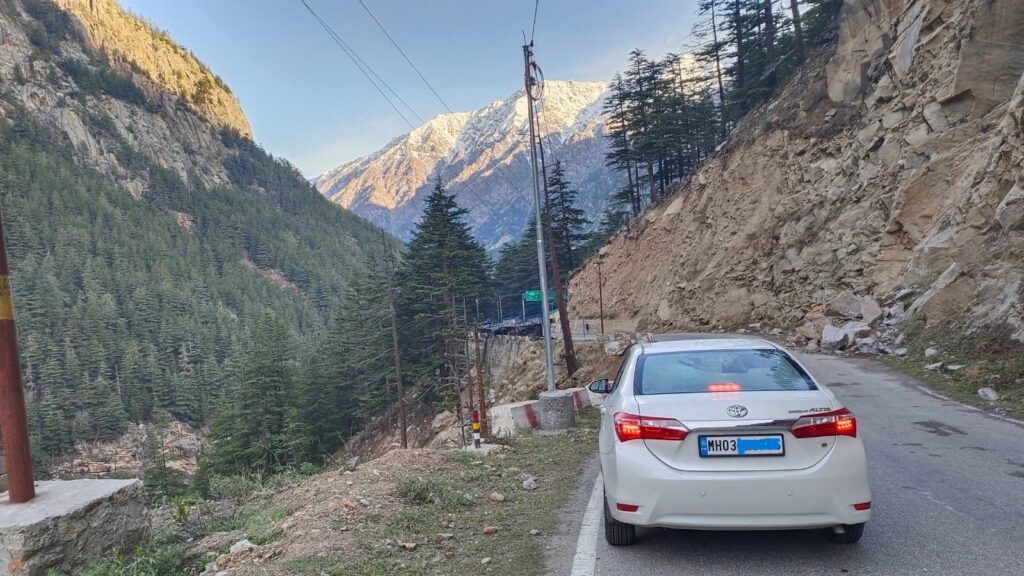
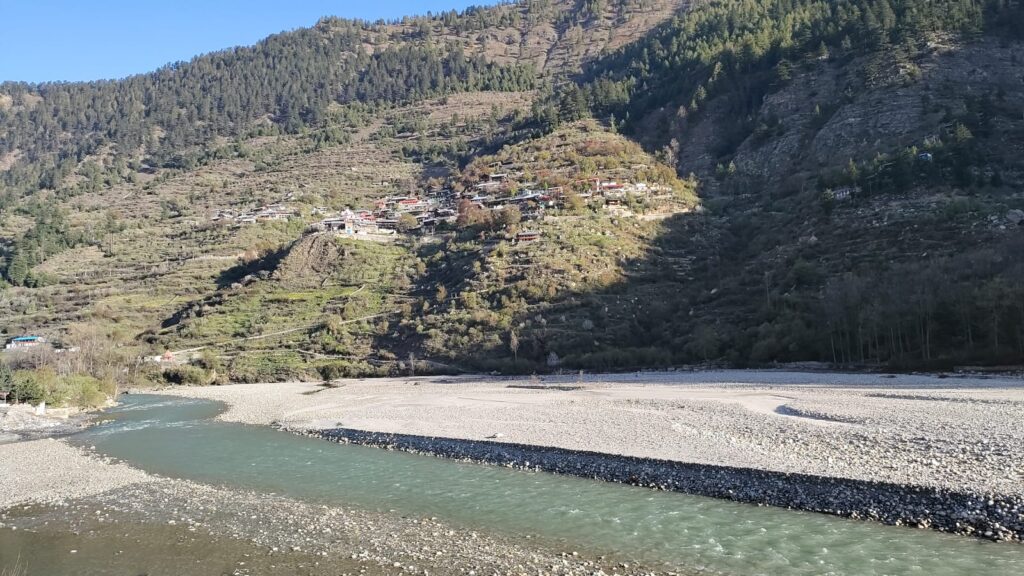
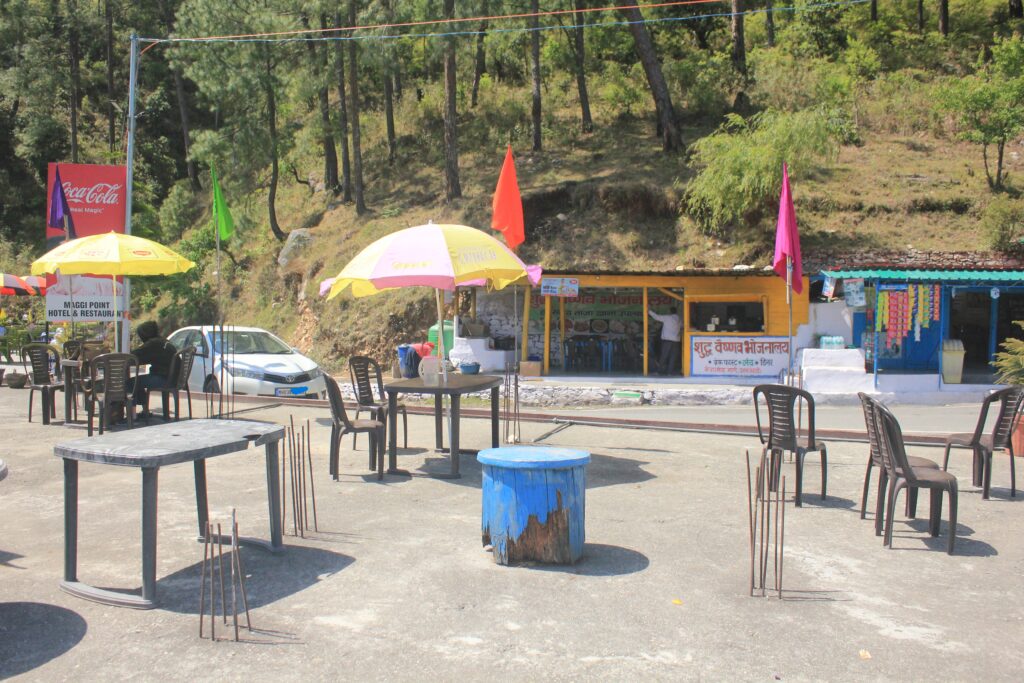
It was a 50km drive from Tilwara to Sitapur (where we were booked at the lovely Kedar River Retreat), but it took us 5 ½ hours to get there. There were multiple police check points holding up long lines of traffic, some for no valid reason. We had to fight our way through to get ahead, showing them our online registration printouts, our hotel bookings. The papers would be passed around multiple senior officials who would ponder over them. When they were finally convinced, they let us through ahead of other vehicles whose documents may not have been in place. It was a tough time for both police and pilgrims, as safety was at stake given the inclement weather this year.
We finally reached our place of stay and after lunch and rest, began packing for our trek to Kedarnath. My daughter and I would each carry a backpack with hot-water flasks, basic medicines, clothes for overnight stay near the temple, extra gloves and socks, tissue paper, towels, ready cash, dry fruits and some chocolate. And a photograph of Amma and Appa. We would wear 4-5 layers of clothing including thermal inner wear, track pants (jeans not recommended), long-sleeved shirts, thick hoodies, all-weather jackets, 2 pairs of woolen socks, shoes and gloves. The reason I listed the elaborate clothing was because it did not help any in the biting cold we felt at the top. It was -3 degrees celsius and snowing, but we wouldn’t know till we got there!

We rose at 1am the next morning, dressed and left at 2am in a vehicle arranged by the hotel to Sonprayag, the last motorable point for private vehicles. We stood in queue at a police check point and after 90 minutes (close to 4am) were allowed to walk a short distance to a parking lot where we got into government-run vehicles (ten passengers in an SUV at Rs.50 per passenger) that ferried us to Gaurikund, the point from where the trek to Kedarnath would begin. We all got off and began walking, climbing steep steps with our backpacks. I looked at my daughter and her sweet face was already falling with the weight and the cold. My breathing was heavy too. We were approached by a government-certified guide for rides on horseback and I said YES without hesitation. After navigating what seemed like a 100 more steps and paying at the counter (everything in the dark), we were finally hoisted on to our horses by their leads. It was a relief! All we had to do was stay atop, which was easy enough, and the horses did the rest. We reached Kedarnath (at 3,585m or 11,755ft above sea level) in record time by 9am with only a single halt in-between.
Weary with the ride and the depressing sight of the beautiful mountain-side littered with bottles, plastic and other garbage, we got off our horses at the base camp. It was another 2km trek to our cottage at the GMVN Swargarohini Complex. There was snow everywhere and it was drizzling rain. We couldn’t see the temple because of construction happening around us. We decided to get a darshan pass first and stood in queue for the same, then checked into our cottage. We removed our shoes and fell asleep under the heavy blankets immediately. At 1:30pm, we had a light lunch at the canteen and walked 500 mtrs to the temple. The queue was very short and we removed our shoes as we neared the entrance. The sun was overhead and it was bright and warm.
And then we were inside! We saw the triangular shaped Shivalinga guarded by the gold Nandi. We forgot all our weariness, the cold, the rain, the snow, everything. We were just grateful to be there and thankful for the good darshan and His benevolence. My daughter and I lingered inside, first in front of the Shivalinga, then around it, where we could see stone carvings of the 5 Pandavas and their mother Kunti set within the walls. The Pandavas had come here to get absolution from their sins from Lord Shiva.
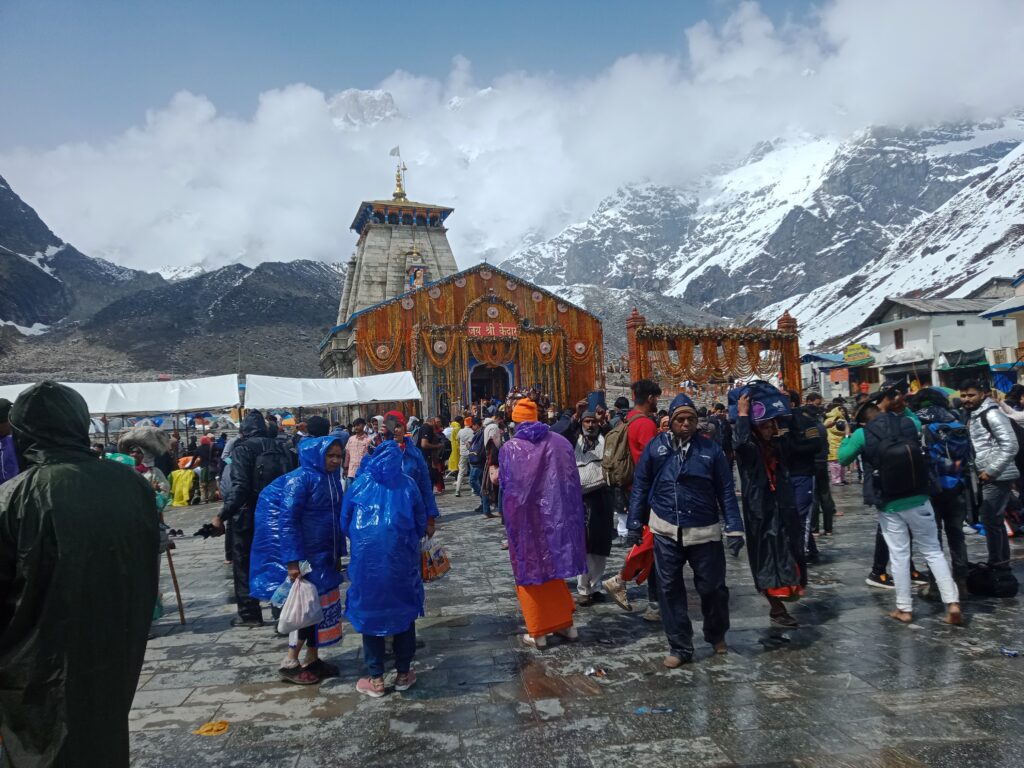
We sat outside in the open area of the temple for a while and then made our way to the memorial of Adi Shankaracharya, the great Hindu sage who had walked all the way from South India to Kedarnath and attained samadhi there.
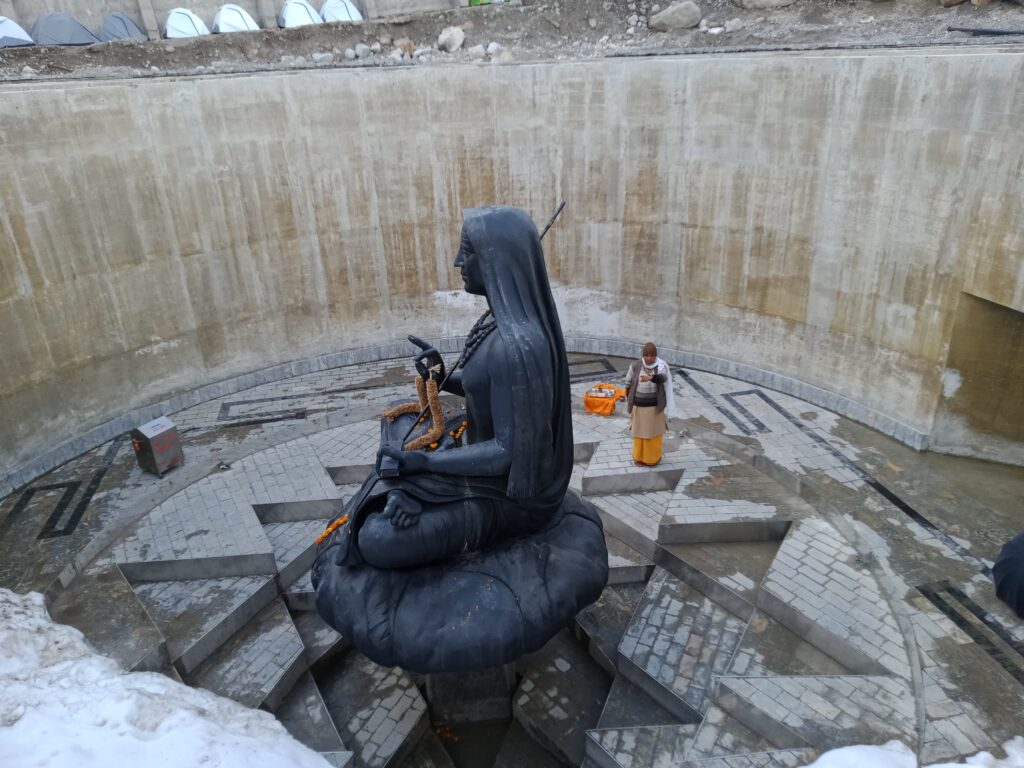
It snowed heavily that night. The next morning, after hot tea at the canteen, we left for Gaurikund. It continued snowing and as we descended, there were torrential rains. It was as we reached Gaurikund that the skies cleared somewhat. Thanking our porters, we walked to the parking area and boarded the same government-run vehicles to Sonprayag. Then back to the resort, grateful we could complete the journey.
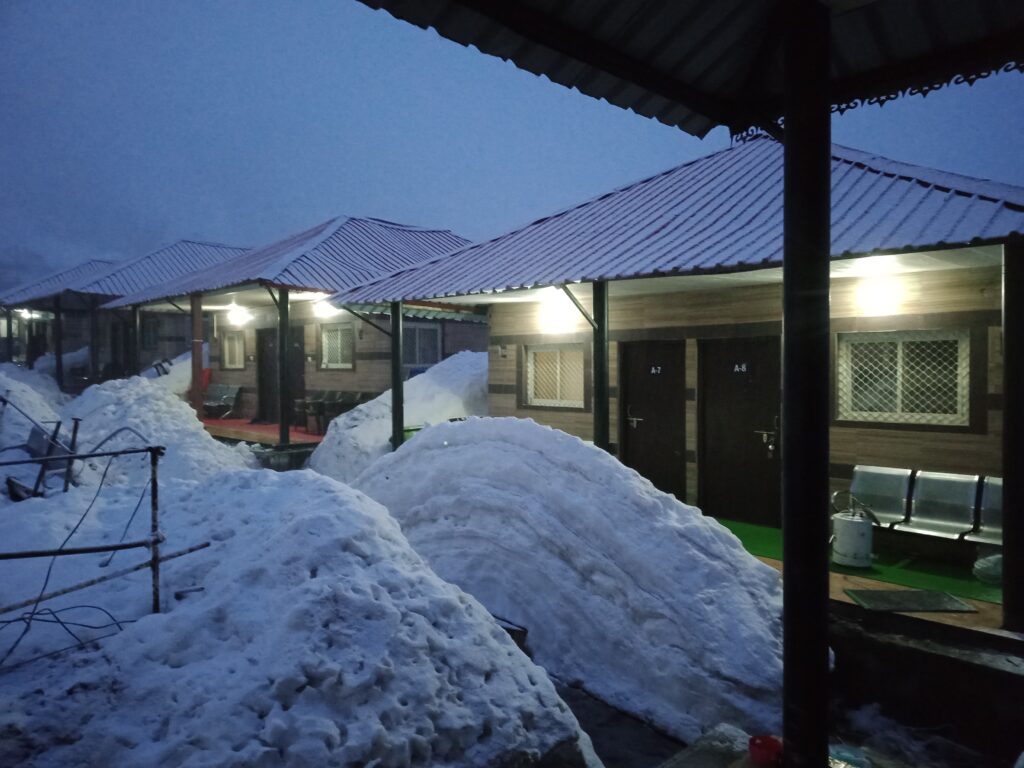
Given the news that there were landslides in the Chamoli district, we decided to cut our journey short and drive straight back to Haridwar instead of risking the journey to Badrinath via Joshimath. So the next morning, 2nd May, we left early after a cup of tea to the welcoming warmth of the plains, first via NH100 and then NH58. The beautiful Mandakini river was with us throughout our journey in Rudraprayag.
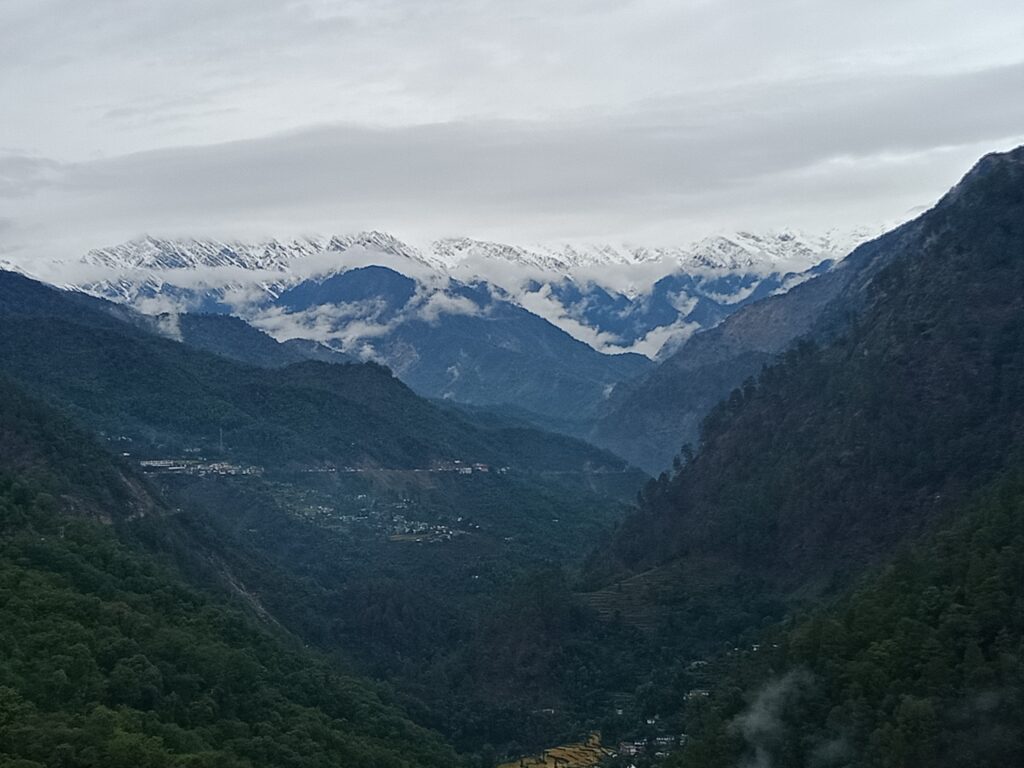
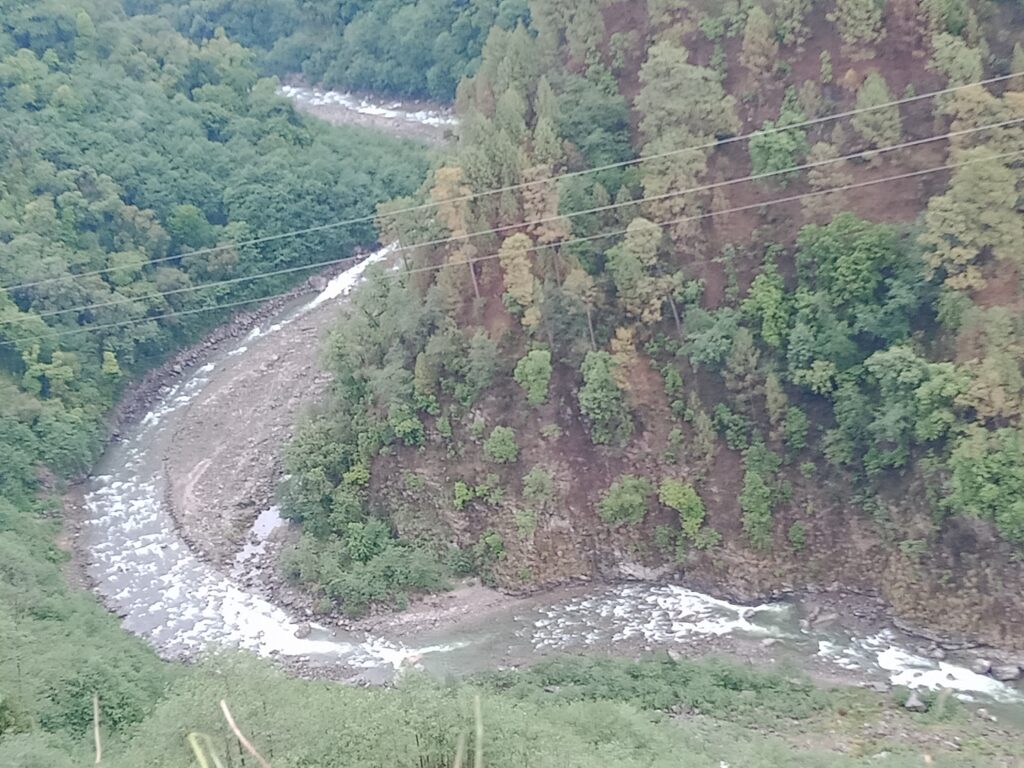
Back at Haridwar and the familiar rooms and surrounding. We took a long walk in the evening, glad to feel the hot sun on our backs. The next morning, we left on the 663km journey to Jhansi. It was late evening when we reached our hotel Natraj Sarovar Portico. After a leisurely breakfast the next day, we left to visit the Jhansi fort. While it did not have the same power or grandeur of the Daulatabad, Golconda or Agra forts that we had visited and climbed, the emotional factor was intense. After all, a young, courageous warrior queen, Lakshmibai, had fought foreign oppression from this very fort and laid her life down in the process.
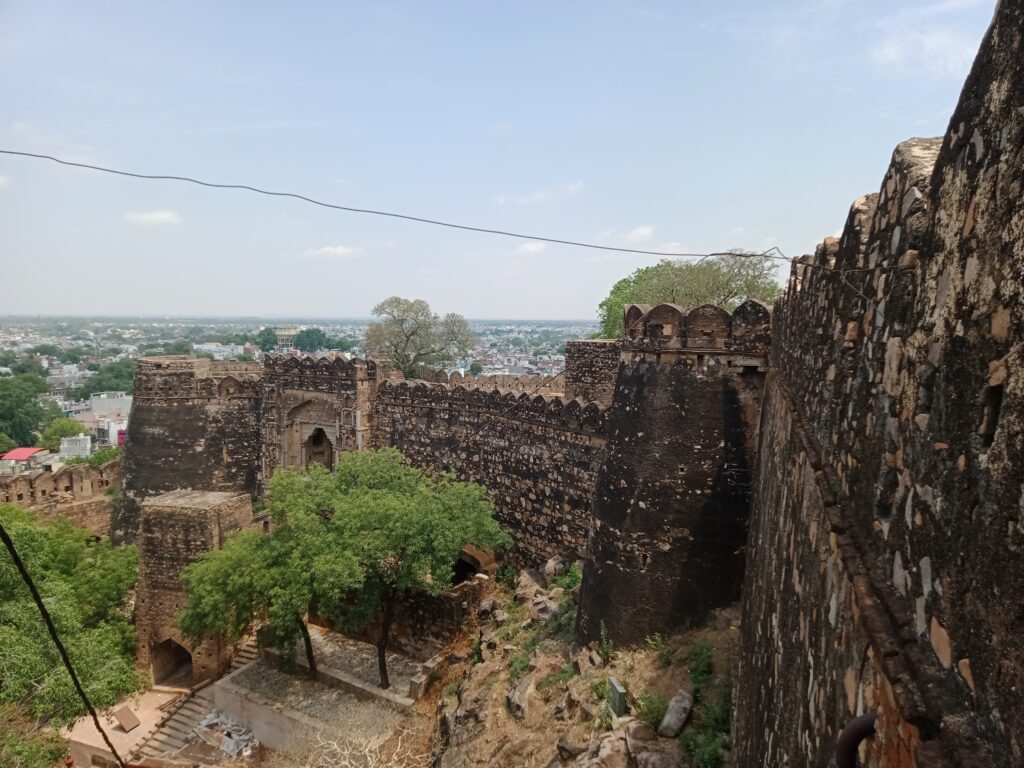
After a stopover at Indore the next day, we reached our home in Mumbai finally on day 15. It had been a great journey for the two of us and we were deeply grateful for our new and wonderful experiences. Amma and Appa were with us throughout in spirit. My brother went to the Ganesha temple near our home and broke a coconut in gratitude for our safe return.
Leave a Reply